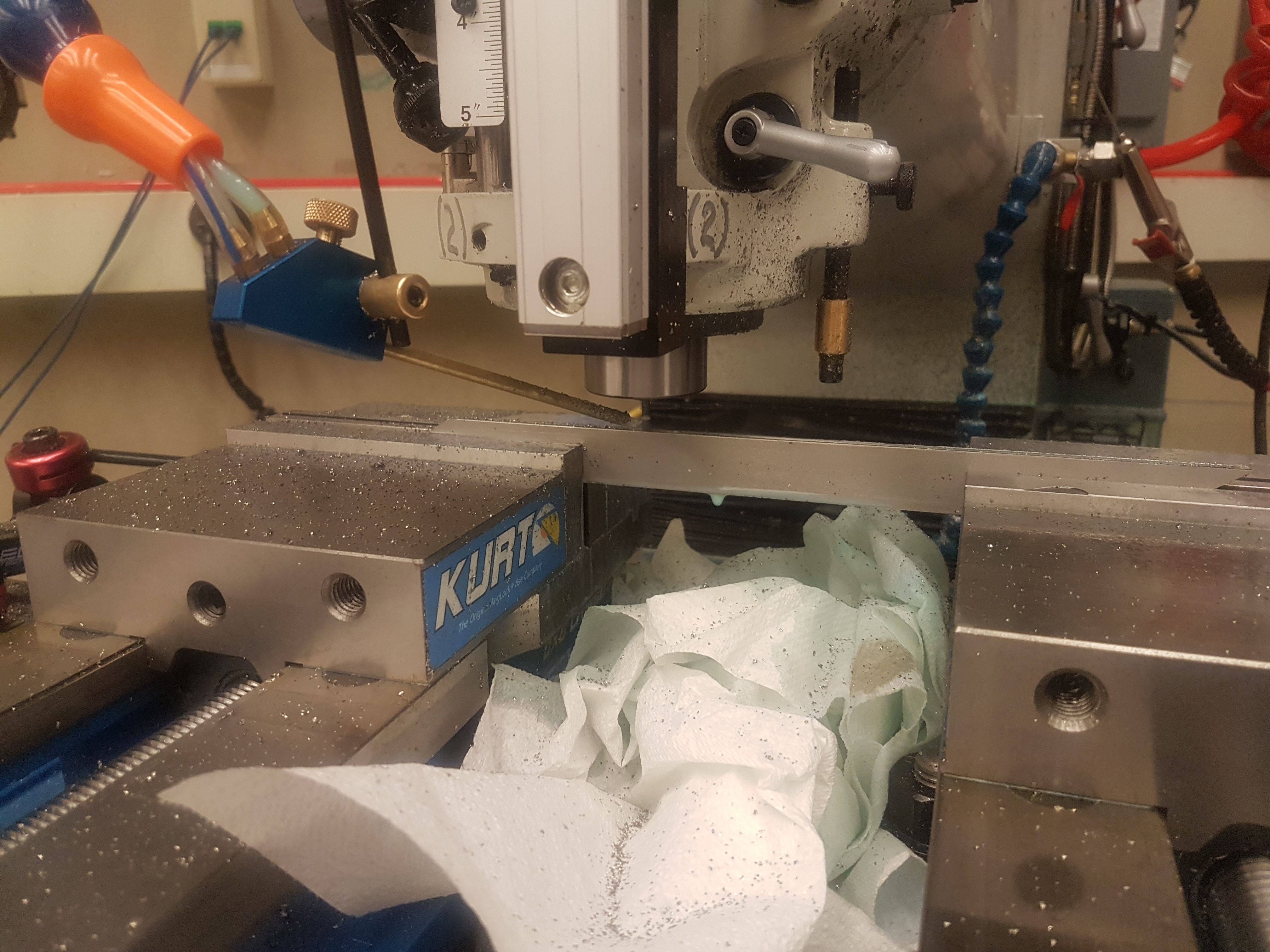...
- 1/8" TiAlN Coated Carbide 4 Flute End Mill for Stainless Steel (McMaster 8883a11)
- 1/2" 15 Degree Tapered HSS or Carbide 4 Flute End Mill.
- Mill (At least 5000 rpm and set up for mist or flood coolant)
...
Machining stainless steel is difficult. Do not expect the process to go as smoothly as machining aluminum. If you have never worked with stainless steel before, ask for help, expect to break an endmill or two, and buy extra stock and tooling because you will probably need it.
For the slots, using a slot saw works fine with phenolic and aluminium. But for stainless steel, HSS tools performs very poorly and it's better to do the slots with an end-mill.
I. Making the Blanks
- Get sheet stock that has the thickness of the final leading edge.
- If you have not used the waterjet before, ask for help.
- From the CAD model, make a .dxf drawing of the part. Check dimensions.
- Using the related Waterjet software, copy-paste and orient the part such that you can get as many parts from the stock as possible. Make sure that all of the pieces fit in the frame of the stock.
- Check settings related to thickness, material etc., make sure they are correct.
- Follow the procedure for waterjetting. After getting the first piece, make sure dimensions are correct.
...
- Break all edges.
- Secure the blank in the visetwo vises. Use one to hold each end.
- Set the speed to 5000 rpm, and the feed to 15 2 ipm.
- Turn on the coolant.
- Plunging 1/16.030" at a time, cut the slot. Power feed is your friend.
- Once you have reached the desired depth, test the slot width with the Fin Preform. Run .005" finishing passes until it fits snugly.
III. Machining the Taper
This process is for a tapered end mill. First you calculate the y and z positions for the final pass. Set the z and slowly work in the y a little each pass.
- Secure the blank in two vises. Use one to hold each end.
- Set the z to the final height.
- Set the speed to 5000 rpm, and the feed to 4 ipm (This value was determined for HSS). Power feed is your friend.
- Turn on the coolant ahead of the end mill.
- Blow chip assist ahead of the end mill.
- Work the y in .025" per pass.
- Run a .005" finishing pass.
- Move the tool to the other side of the part and repeat.
There are a couple ways to go about this. The first is to use a tapered end mill. This worked well on phenolic. However, now there is a concern that the tapered end mill will not have a uniform chip load and would be a poor choice on stainless steel. The alternative is to tilt the head of the mill or set up an angled work holding.
IV. Finishing
- Attach sand paper to a flat plate, Sand outer faces through 1500 grit.
- Polish outer faces.
- Clean and degrease all surfaces with acetone in preparation for bonding with the fin preform.
...
